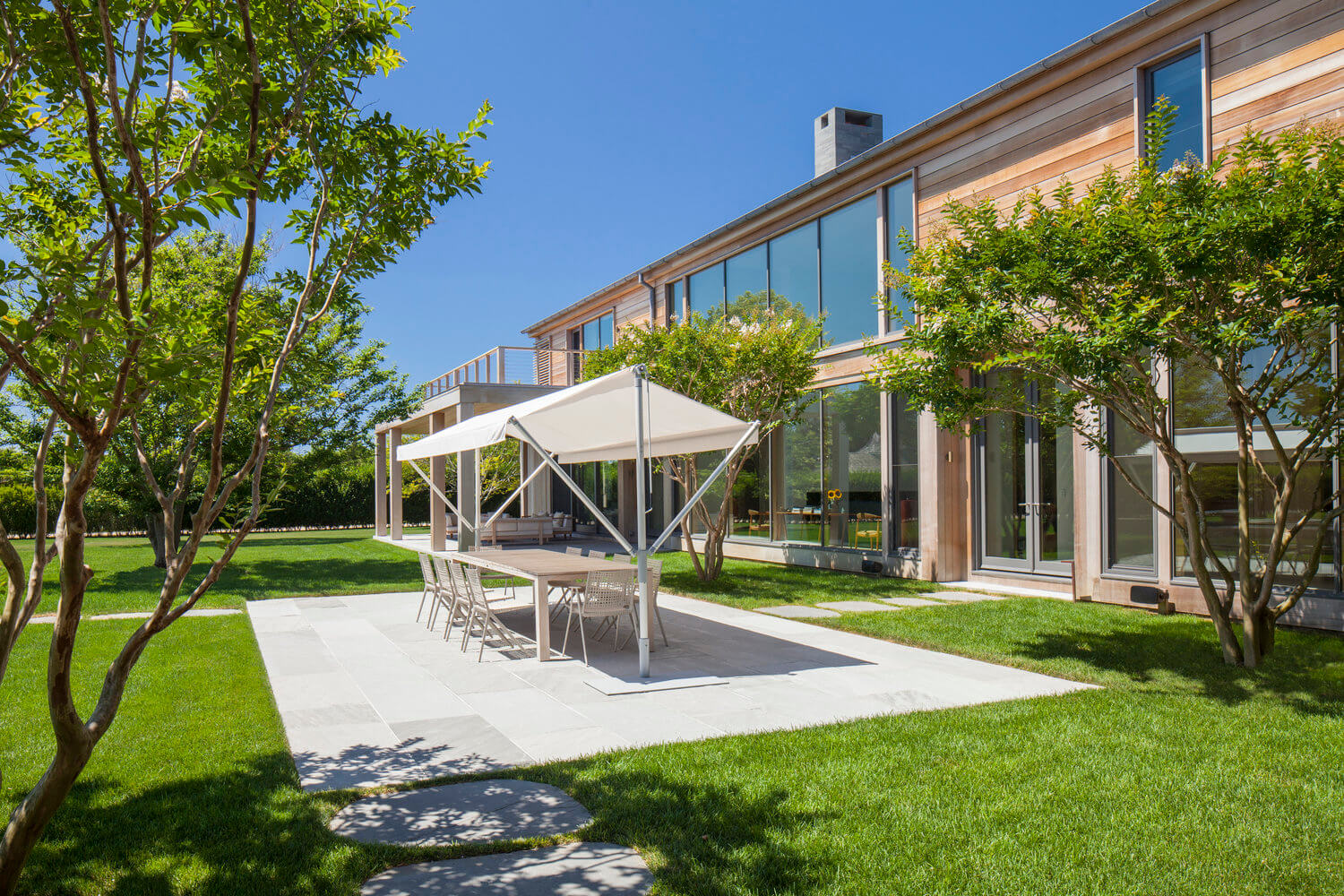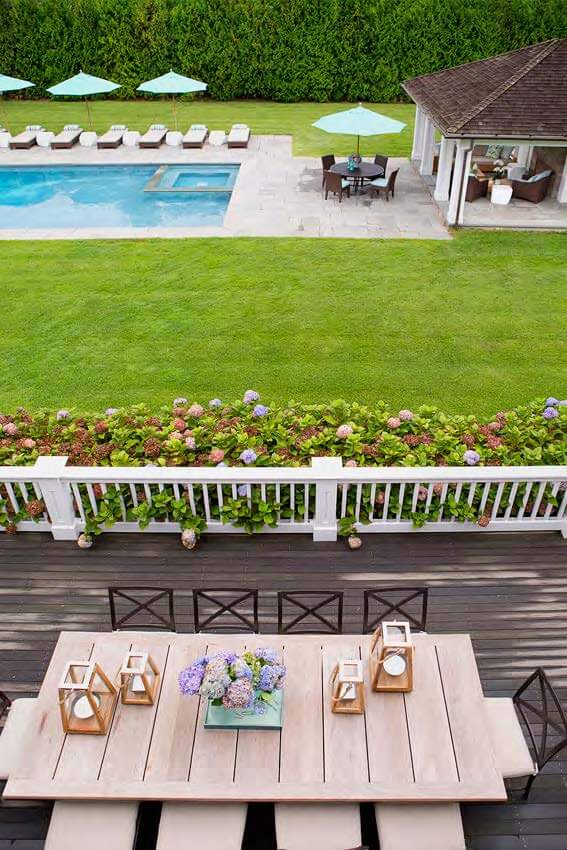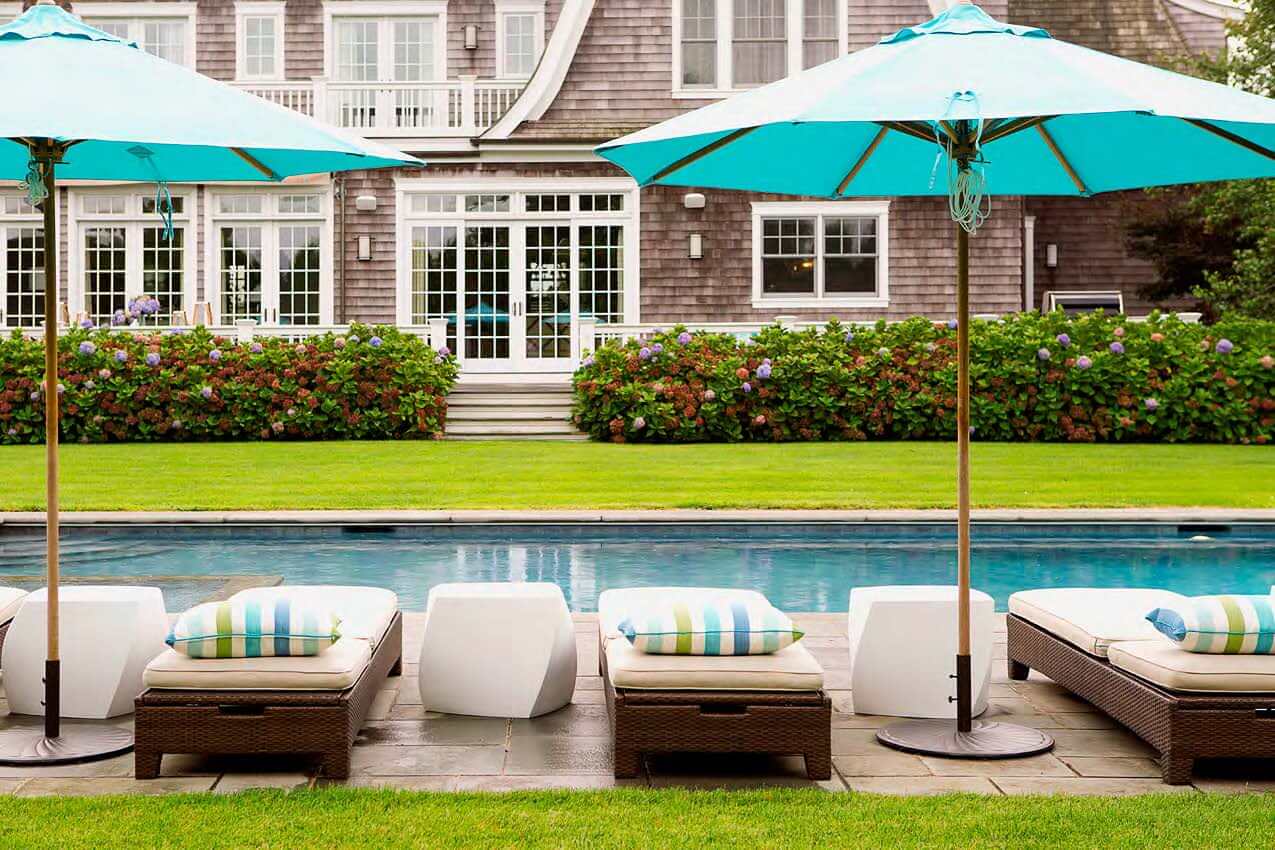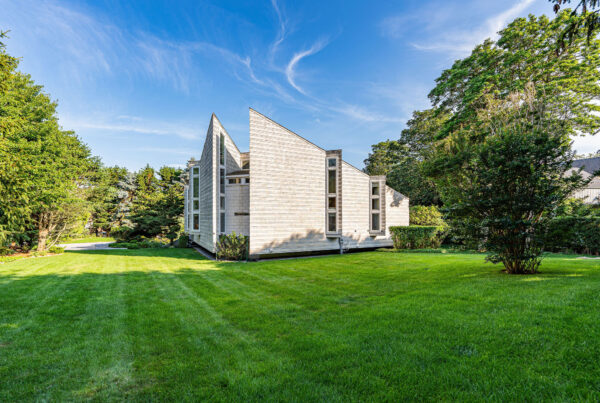“There’s a difference between decorating an outdoor space and integrating the exterior into a larger whole,” says landscape architect Christopher LaGuardia, who started his own firm, LaGuardia Design Group, in 1993. This is especially true in the Hamptons, where everyone wants to enjoy the outdoors during the peak season.
Here, LaGuardia and Emilia Demauro, one half of Demauro & Demauro Landscape Design, as well as interior designer John Bjørnen, principal of Bjørnen Design, share their tips for optimizing your outdoor space.
Establish Zones for House, Pool
LaGuardia tries to start by separating the pool from the house. “From inside, I want you looking at the landscape,” LaGuardia says. “Plus, nine months of the year, the pool cover is on.” For most projects, he’s brought on board when the house or property is purchased and develops plans for a year before breaking ground. But even homeowners working with an existing pool can add a hedge or row of plants to help create a visual boundary around the pool.

Plant With the Pool in Mind
According to Demauro, you should choose plants that are appropriate for a typical pool’s location in a sunny, high-trafficked area. This means avoiding thorny plants like roses and, if kids are around, making sure you’re not adding bee favorites, like lavender, close to the pool. (Otherwise, plants that encourage bee activity are usually a plus.)
“In general, pool water is not much of a concern when it comes to plants,” Demauro says. “What we do take into consideration is that most pools have a lot of sun exposure, so we use tough plants like Mandevilla, Caliente geranium, verbena and oleander, to name a few.”
Both LaGuardia and Demauro like to put grass almost to the edge of the pool. “It’s perfect for a nice country look,” Demauro says, but it also works with a contemporary house, too.
Eighteen inches to two feet of stone surrounding the pool is standard; light colored stone won’t get as hot and blends in more seamlessly. LaGuardia’s favorite is French Limestone. He’ll use the same stone to create a space for lounge chairs near the pool, and—close to the house—for outdoor dining. “Using a single material gives a sculptural quality to what you’re doing,” he says.

Think of Indoor/Outdoor Flow
Sag Harbor-based Bjørnen is an interior designer, but he coordinates with the landscape team on every home project. “It’s integral to be in dialogue, so the interior and exterior are symbiotic,” he says, pointing to the importance of easy movement between spaces.
The kitchen, for example, should be near any outdoor barbecue and dining space, and, ideally, there’s a bathroom close enough to the pool to avoid wet footprints all through the house. Ideally, an outdoor living space meant for long dinners isn’t just below the windows of the children’s bedroom(s), and an outdoor spot to eat lunch during the heat of the day has some shade or an umbrella. “All those aspects need to be factored into designing the best possible orientation and spacing of seating, lounging and dining,” he says.
Create Your Own Meadow
Piet Oudolf, a Dutch landscape designer who did the planting of New York’s High Line, has inspired homeowners to request something different from the standard mix of grass, hedges and hydrangeas. “There’s a move away from a mowed lawn towards a more naturalistic meadow look,” LaGuardia says. “It’s much more dynamic to look at, it’s ecologically sensitive, plus it draws in wildlife and biological diversity.”
Once installed, meadows require minimal maintenance; but they’re difficult to establish. LaGuardia recommends seeding meadow in the fall to get a jump on weeds and then mowing until July. Mixing warm season grasses with cool season grasses in the same space will produce a meadow that is constantly in flux. For those with less exterior space, a border of wildflowers and meandering stone pathways can offer a similarly naturalistic look.
Go Native with Your Greenery
Both landscape studios extol the virtues of using native species. Demauro’s favorites include Baccharis (sometimes called brooms), bayberry, Amelanchier (also called shadbush or service berry) and native dogwoods. In Montauk, Fort Pond Native Plants is an excellent source for plants and informed guides in selecting them. Staffers can explain which plants attract butterflies or hummingbirds; which are salt-tolerant (essential for oceanfront houses); and which are low maintenance or deer resistant.
“With our clients, we encourage the use of natives,” LaGuardia says. “They help the local environment, preserve the Hamptons’ biodiversity and look beautiful. You can do a whole landscape with native species, so why wouldn’t you?”

Define Your Outdoor Spaces
In entryways, flanking pools or on decks, Demauro likes to use container gardens. “Before you even go to the garden center, look at gardening books to get ideas,” she says. “Keep in mind the level of sun in the space and don’t forget to fertilize the container.” To create an instant outdoor room, Bjørnen suggests laying down an outdoor rug before adding furniture.
For decking, especially in ocean front houses, LaGuardia likes to use ipe, an exotic hardwood that’s pricey but incredibly durable. For outdoor lighting, he prefers a minimalist look. “Especially with modern houses, there’s so much glass that you need to light up something outside or the windows become mirrors at night.” In order to avoid light pollution, lights can be placed in tree branches facing downward, which also keeps them out of sight during the day.

Set Up Your Outdoor Living Room
With so many outdoor upholstery options, you can easily create an outdoor living room that doesn’t result in hauling pillows inside every time it drizzles. Bjørnen frequently uses Sunbrella and Perennial for durable upholstery material—even inside the house—and his go-to for furniture is Richard Schultz’s 1966 collection. “It’s timeless, incredibly well made, and it can be passed down to the next generation.”
He also points to the difference between furniture that’s “water resistant” (will probably need covers) and “waterproof” (no covers needed during the season). “One mistake people make is to leave things outside that aren’t meant to be fully exposed to the elements, which results in breakage, color fading, tarnishing or stains,” Bjørnen says.
Don’t Forget the Kids
For anyone with children, it’s key to take into account how they like to use the outdoor space—it may not be enough to ensure there’s a grassy lawn for play. “Kids like to get away from the parents,” he says, “so I like to make a destination they can go to and explore, whether it’s a swing in a tree or a fire pit or just a slightly separate place to run around.”








